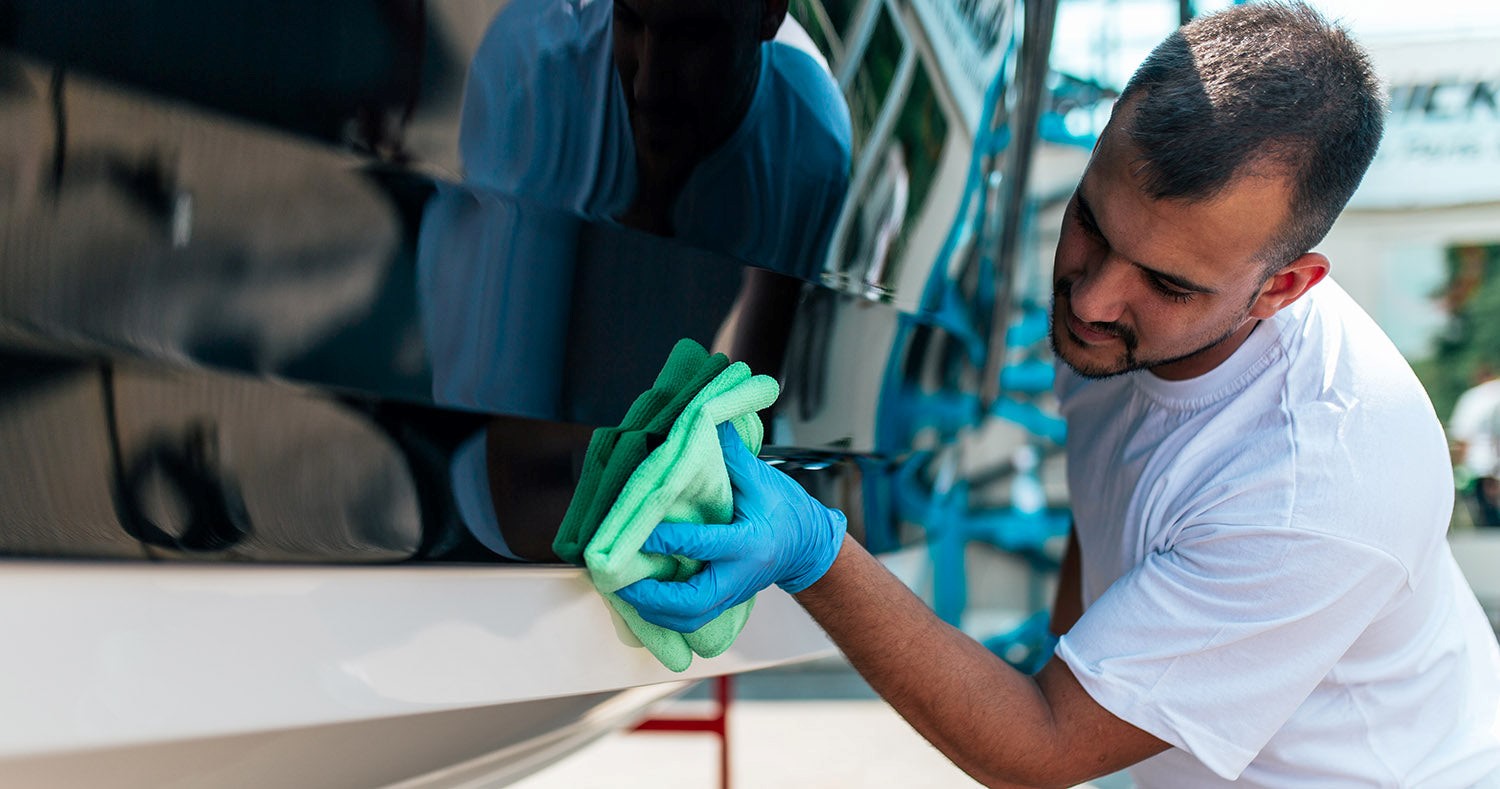
Fiberglass repair is a valuable skill for anyone involved in maintaining or repairing items made from this versatile material. Whether you’re working on a boat, a car, a bathtub, or any other fiberglass-reinforced object, knowing how to repair and restore it effectively can save your time and money as well.
In this article, we’ll explore the essential tools required for fiberglass repair, delve into six techniques, and highlight some common mistakes to avoid when working on fiberglass projects. By the end of this article, you’ll have a solid understanding of how to approach fiberglass repair with proper boat repair service in Sarasota.
Tools Required for Fiberglass Repair
Before starting any fiberglass repair project, it’s crucial to have the right tools on hand. Having the appropriate tools can make the fiberglass repair process smoother and ensure the quality of your work. The essential tools for fiberglass project include:
- Safety Gear: To safeguard your well-being, it is imperative to wear appropriate protective equipment during work. Gloves provide hand protection, safety glasses shield your eyes, and a respirator guards against inhalation of hazardous fiberglass dust and chemicals. These safety measure are indispensable to ensure your health and safety when dealing with potentially harmful materials.
- Fiberglass Mat and Cloth: The foundational materials serve as the structural backbone of various fiberglass repair projects. By providing essential reinforcement, fiberglass mats, and cloth fortify weakened or damaged areas. They create a resilient matrix that, when combined with the epoxy resin, restores the integrity of the repaired object.
- Epoxy Resin: Epoxy resin assumes the pivotal role of an adhesive agent ensuring a strong and durable repair. It binds the fiberglass mat or cloth securely to the damaged area, forming a sturdy, long-lasting bond. This adhesive quality is instrumental in rejuvenating the structural strength of the repaired item.
- Mixing Tools: The accurate blending of epoxy resin and hardener is a critical aspect of achieving a successful repair. To achieve this, essential tools like mixing sticks and disposable cups facilitate precise and thorough mixing. This meticulous approach ensures that the epoxy resin cures correctly and adheres effectively.
- Sandpaper: In the restoration process, sandpaper with various grits is indispensable. It serves the purpose of smoothing repaired areas, creating an even and polished finish. Additionally, sandpaper plays a pivotal role in preparing surfaces for subsequent procedures, such as painting or gel-coating, ensuring a product with a refined appearance,
- Rollers and Brushes: These tools are integral for applying epoxy resin uniformly and smoothing out the fiberglass materials. Their role is critical in eliminating air bubbles, promoting proper adhesion, and contributing to the overall quality of the repair.
- Heat Gun or Torch: A heat source, such as a heat gun or torch, is indispensable for two essential functions. It effectively removes air bubbles from the epoxy resin, enhancing the repair’s integrity, and it accelerates the curing process, expediting the development of a strong and durable repair.
- Mold Release Wax: In projects requiring the use of molds, mold release wax serves as a vital component. it prevents the epoxy from adhering to the mold’s surface, ensuring that the cured component can be easily separated from the mold. This simplifies the process and results in a well-defined final product.
Fiberglass Repair Techniques
Once you have gathered your tools, it’s time to explore the various fiberglass repair techniques. The choice of technique depends on the nature and extent of the damage, but here are six commonly used methods:
- Patch Repair: This technique is suitable for small damages in fiberglass. A fiberglass patch is cut to match the damaged area’s shape. Resin is applied, and the patch is layered over the damaged section, creating a strong and seamless repair. It’s a quick and effective solution for minor issues.
- Epoxy Injection: When dealing with cracks and holes, epoxy injection is a precise method. It involves filling the gaps with epoxy resin, effectively sealing and reinforcing the damaged area, ensuring structural integrity is maintained.
- Cloth Layering: For larger areas in need of repair, cloth layering is a gradual approach. Fiberglass cloth is layered with resin, and multiple layers are added to build up strength progressively, providing a strong, long-lasting fix.
- Mold Repair: Mold repair is essential when working with molded fiberglass structures. To restore the original shape, a mold is created, and layers of fiberglass are laminated onto it. This technique ensures the repair matches the structure’s integrity.
- Fiberglass Over Foam: Creating lightweight and durable structures is possible with the fiberglass over foam technique. Layers of fiberglass are laminated over a foam core, resulting in a strong and lightweight construction suitable for various applications.
- Cosmetic Finish: When aesthetics matter, a cosmetic finish is ideal. It involves sanding the repaired area and applying a gel coat, resulting in a smooth, glossy surface that restores the object’s appearance, making it visually appealing once again.
Common Mistakes to Avoid When Doing Fiberglass Repair

While fiberglass repair can be a highly effective way to restore items, there are common mistakes that can weaken the quality and longevity of the repair. Some of these mistakes include:
- Inadequate Surface Preparation: Neglecting proper cleaning and preparation of the damaged area can lead to subpar adhesion and a weaker final repair. Contaminants, residue, or poor surface roughening can hinder the epoxy’s ability to bond effectively, compromising the overall strength and durability of the repaired area.
- Incorrect Mixing: Accurate measurement and thorough mixing of epoxy resin and hardener are paramount. Deviating from the prescribed ratios can result in a weak bond or incomplete curing. A precise mixture ensures the epoxy cures as intended, guaranteeing the repair’s structural integrity and longevity.
- Trapped Air Bubbles: Failure to remove air bubbles from the epoxy resin can compromise the strength of the repair and create unsightly imperfections. Using a roller or brush to eliminate these bubbles is essential for ensuring that the epoxy bonds uniformly, without voids or weak spots, ultimately enhancing the overall quality of the repair.
- Neglecting Safety: Fiberglass work involves handling potentially harmful materials, making safety precautions crucial. Ignoring safety measures can expose you to health hazards, including skin and respiratory issues. Properly chosen safety gear, ventilation, and adherence to safety guidelines mandated by the Occupational Safety and Health Administration (OSHA) are non-negotiable for a secure and healthy working environment.
- Rushing the Curing Process: Epoxy resin requires adequate time to cure fully and develop its intended strength. Hastening the curing process can result in a less durable repair. Premature handling or exposing the epoxy to unfavorable conditions may lead to weakened bonds and reduced longevity, undermining the overall effectiveness of the repair. Patience in the curing phase is essential for optimal results.
Conclusion
These six essential tips for fiberglass repair equip you with the knowledge and tools necessary to tackle a variety of projects effectively. By understanding the right tools, mastering repair techniques, and avoiding common mistakes, you can confidently restore fiberglass-reinforced items, ensuring their longevity and structural integrity.
At The Boat Concierge, we are your trusted experts for top-quality fiberglass boat repairand maintenance. Contact us today to ensure your vessel receives the care it deserves, keeping it in top condition for all your aquatic adventures.



